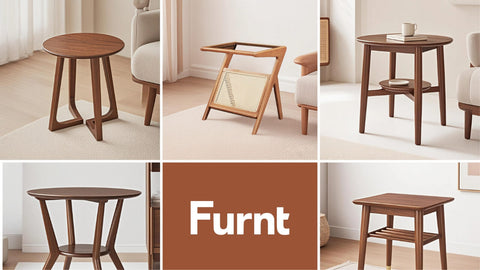In a quiet village in Central Java, Indonesia, lives a gentle soul named Ibu Sari, or simply Nenek, meaning “grandmother” in her local language. At 72, she’s been weaving rattan furniture for most of her life. There’s no factory, no machines, and no hurry. Just hands, time, and heart.
She’s the woman behind our rattan bedside tables and dining chairs. And we think you should know a bit about her.
A Life of Craft and Care
Ibu Sari learned her craft the traditional way: by watching her mother. She sat beside her under a mango tree, observing each twist and turn of the cane. Over time, her fingers took over. She never needed written instructions. Everything was passed down through rhythm and repetition.
Today, she still works from home, barefoot on a cool tile floor, surrounded by bundles of sun-dried rattan. The mornings are quiet, and that’s when she weaves — just as she always has. Her fingers, though aged, move with remarkable care and certainty.
“Rattan is like a person,” she once told us. “If you force it, it breaks. You have to listen to how it wants to bend.”

Weaving with Meaning
When we asked Ibu which piece of furniture she enjoys making most, she gave a soft smile.
“All of them. I make them with my heart. And I truly wish the people who use them live a healthy, long life.”
In many parts of Asia, rattan isn’t just a material. It’s a symbol of wellbeing. Its natural curves and long, flexible fibres are thought to represent health, harmony, and longevity.
While in the UK we often associate rattan with garden sets or conservatories, in Asia it’s found in bedrooms, kitchens, and everyday family spaces. It’s comforting, calming, and always quietly present — much like the people who make it.
From Her Hands to Your Home
We love the idea that one of Ibu Sari’s side tables might now live beside your bed, holding your book or morning cup of tea. Or that her dining chairs might be around your kitchen table, catching the soft sounds of a family dinner.
These pieces are not mass-produced. They take time. They carry subtle signs of the hands that shaped them — not mistakes, but marks of character. Furniture with a story.
You can see her craftsmanship in our hand-woven dining chairs and rattan bedside tables.
Why Her Story Matters
There’s something lovely about knowing where your things come from. In a world full of flat-packed sameness, Ibu Sari’s work is personal. It connects continents and generations. She weaves not just materials, but a little of herself — her patience, her care, and her good wishes — into every single piece.

So if you own one, or plan to, we hope it brings a bit of that same warmth into your home.
Frequently Asked Questions
Where is your rattan furniture made?
Our rattan furniture is handcrafted in Central Java, Indonesia by skilled artisans like Ibu Sari. Each piece reflects traditional techniques passed down through generations.
What makes rattan furniture special?
Rattan is a natural, flexible material known for its strength and timeless beauty. Beyond its durability, it’s often seen as a symbol of harmony and wellbeing in many Asian cultures.
Are these rattan pieces handmade?
Yes, all our rattan furniture is made by hand — not mass-produced. Every item carries subtle signs of the person who made it, giving it character and authenticity.
Can I use rattan furniture indoors?
Absolutely. While rattan is popular in conservatories and gardens, it’s also perfect for bedrooms, dining areas, and living spaces. It adds warmth and natural texture to any room.





Comments (0)
There are no comments for this article. Be the first one to leave a message!